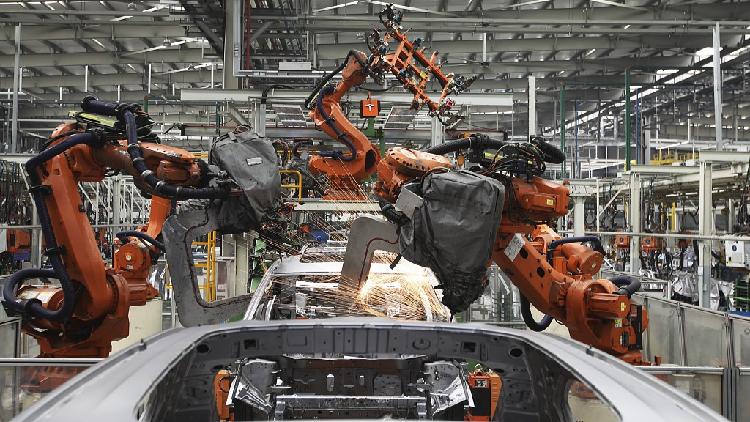Editor’s note: Lin Yang is a senior manager of a leading commercial bank in China. As an economist, his work and research experiences cover financial technology (Fintech), personal banking, digital banking, consumer financing, inclusive financing, etc. The article reflects the author’s opinions and not necessarily the views of CGTN.
While the burst of new technologies such as AI, blockchain, 5G and big data are poised to drastically enhance productivity and revolutionize how we work and live, there is empirical evidence worldwide that rural areas are lagging behind due to an urban-rural divide. In China, however, financial institutions are using these cutting-edge technologies as a tool to narrow that digital gap. It ensures that the vast rural population can reap equally the benefits of China’s rapid digital advancement.
Availability of financial services
Lack of financial services is often seen as a major cause for poverty. Thankfully, Chinese financial institutions have leveraged information technology to strengthen collaborations with partners like rural inclusive financial service stations, agricultural information institutions, and e-commerce service platforms. Experimental practices of integrating finance and public services have been proven successful, such as setting up digital agricultural service centers and remote video banks.
Furthermore, financial institutions have utilized technologies like graph computing and AI to integrate financial services into various scenarios like agricultural trade, rural e-commerce, and small-scale payment. By doing so, these institutions are better equipped to cater to the diverse financial needs of various groups in remote rural regions, including rural entrepreneurs, returning migrant workers, and impoverished farmers.
New 5G networks, face recognition, ethnic language translation, and intelligent terminals have also played a big role, allowing for proactive door-to-door or remote financial services. These services effectively cater to the needs of various groups like the elderly, disabled, and ethnic minorities in rural areas.
Credit services
At the heart of modern credit services lies data. Financial institutions are utilizing technologies like satellite remote sensing and electronic fences to automate data collection. This data collected—often referred to as the “digital footprint” of agricultural supply chains— enables financial institutions to transform factors like honest labor, tax credit, and patents into quantifiable data that can underpin loans to rural customers. It effectively lowers the barrier to loans and other financial products. Moreover, it helps enable the whole society to enjoy safer and higher quality agricultural products.
When it comes to risk control mechanisms, financial institutions use technologies like Internet of Things, blockchain, and 5G for crop data tracking, as well as real-time monitoring for live collateral. This approach will improve the monitoring of operational and credit risks of agricultural enterprises.
In terms of service integration, technologies like big data and artificial intelligence can accurately identify the financing needs of enterprises in sectors such as the seed industry, smart agriculture, and agricultural product processing. To better serve the diverse financing needs of rural enterprises, there are various tailor-made digital financial products like agricultural machinery mortgage loans, policy pledge loans, and agricultural product processing equipment lease loans.
Public services
First, in terms of public utility, financial institutions can build one-stop payments centers for water, electricity, gas, and heating services in rural areas. This effectively bridges the “last-mile” gap in rural public services.
Second, a comprehensive “finance + medical” service facilitates the digitization and ease of medical service settlements, fee payments and insurance claims. It also provides financial support for rural residents to enjoy high-quality medical services.
Third, China’s social security system is highly integrated. Using social security cards with financial functionalities as a medium enables integrated services such as policy dissemination, information inquiry, and transaction processing, effectively addressing pressing challenges for rural communities.
Agriculture, rural regions, and farmers serve as the foundation of a thriving economy and a harmonious society. Across the globe, billions of individuals still call rural areas home, and financial services can be an essential tool for elevating their standards of living. Thanks to new technologies, financial institutions can significantly reduce service costs, expand their scope, and enhance support for rural financial resources. Their endeavors of actively utilizing the latest financial technology to facilitate rural rejuvenation, could serve as a noteworthy global exemplar.
(Cover via CFP)




